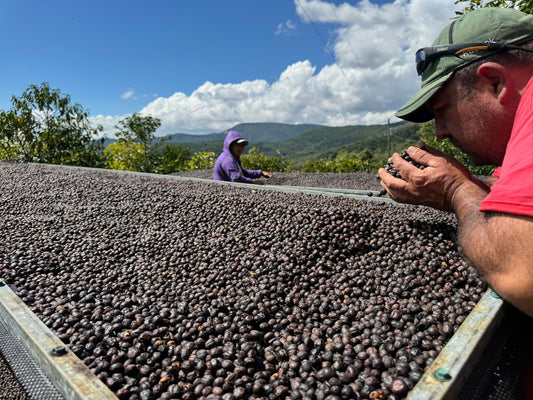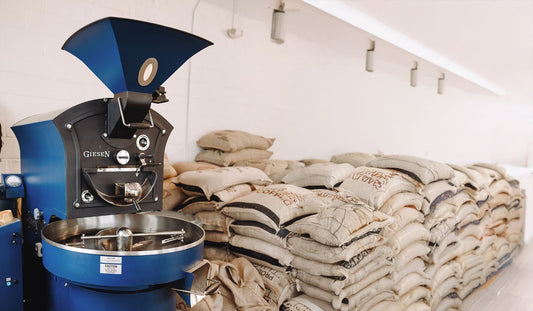The key to the honey process is control over fermentation and drying. After de-pulping, the raw beans are left with varying amounts of mucilage, which influences the flavor of a coffee and also its color category. The amount of sunlight the beans receive during drying and the duration of the drying process further define the coffee's classification into white, yellow, red, or black honey, with each category representing a different mucilage content and exposure level to the natural elements.
Black Honey: This method requires leaving the most mucilage on the bean, and requires the beans to be dried in the least amount of sunlight, often under shade. It's the most labor-intensive, but results in a coffee with intense sweetness and complexity.
Red Honey: This method requires leaving less mucilage than Black Honey, and they're dried with a moderate amount of sunlight. This surprisingly strikes a balance between body and acidity of the final coffee, often leading to a rich, fruity flavor.
Yellow Honey: Here, even less mucilage is left on the beans, which are dried with more sunlight. The result is a coffee with a milder body and acidity, highlighting only a subtle sweetness.
White Honey: The least mucilage of all, with beans dried in full sun, leading to the lightest body and brightness, closest to washed coffees but with a hint of the honey process's characteristic sweetness.
Flavor Characteristics
Each honey process variant imparts unique flavor characteristic to the coffee:
Black Honey coffees are known for their deep, complex flavors, with notes of chocolate, fruit, and a well pronounced sweetness.
Red Honey produces a balanced cup, often with red fruit notes, caramel, and a smooth body.
Yellow Honey tends to have more subtle sweetness, with bright acidity and citrus or light floral notes.
White Honey offers the cleanest profile, with delicate sweetness, clarity, and tea-like qualities.
Origins and Preferences
The honey process is particularly popular in Latin America, including Costa Rica, Panama, and Brazil, where microclimates and altitude play significant roles in its popularity. Producers choose the specific honey method based on several factors, including the environment, desired flavor profiles, and market demand. For instance, Costa Rica has become known for honey-processed coffees, largely due to its mastery over the method, and the country's micro-mill revolution, which spotlights their small-batch, high-quality coffee production.
Sustainability and Quality
Sustainability: The honey process is considered more environmentally friendly than fully washed coffees because it uses less water. However, it requires more meticulous management to prevent over-fermentation, and to ensure even drying. Proper wastewater management is also essential to prevent pollution from the mucilage runoff.
Quality: This process can help producers bring out a wide range of notes, which can cater to diverse consumer demand. However, the risk of inconsistency and defect is also higher, if producers do not carelly attend to every single step of this process.
The Bottom Line
The ability to create a spectrum of subtle flavors, simply by varying mucilage content and manipulating drying conditions, is what makes the honey process especially unique. And as producers meet the challenges of the future, we may see even more types of honey processing styles come to life.



